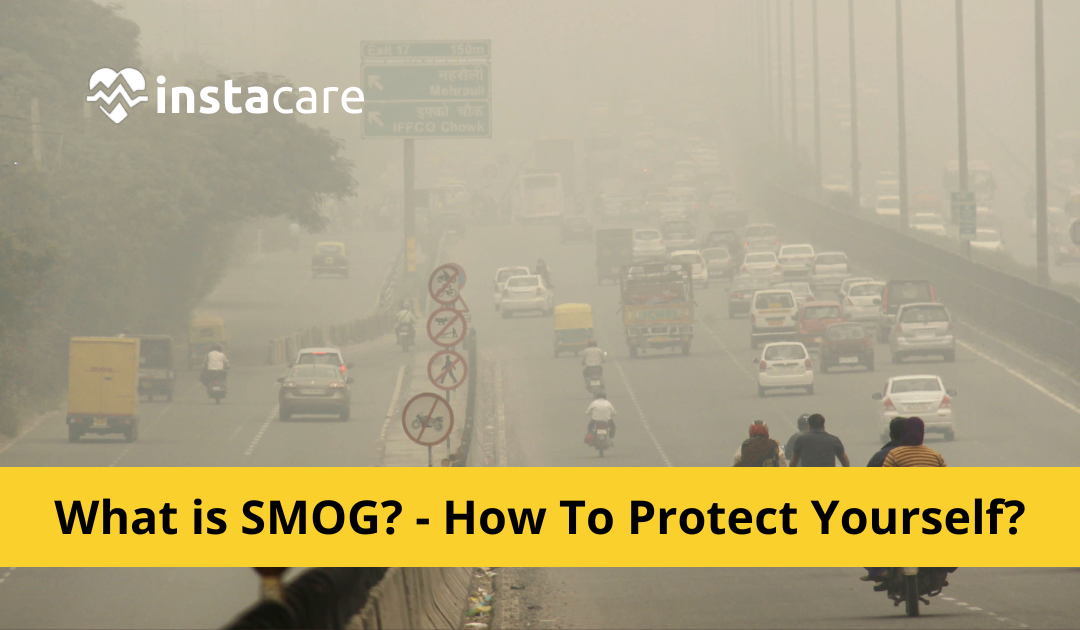Smog is air pollution that makes it difficult to see. In the early 1900s, a mixture of smoke and fog was initially called "smog." Coal burning was typically the source of the smoke. Industrial areas used to have a lot of smog, and cities still have it.
What Is Smog And Why Is It Harmful?
Smog is air pollution that makes it difficult to see. When heat and sunshine in the atmosphere interact with industrial pollutants from industries, power plants, autos, and other sources, smog is created. Smog may destroy vegetation and is unhealthy for both people and animals. Your throat, nose, and eyes may get irritated.
Types Of Smog
Smog is classified into at least two categories: sulfurous and photochemical. Sulfurous smog, often known as "London smog," is brought on by burning sulfur-containing fossil fuels, primarily coal, and is characterized by a high level of sulfur oxides in the air.
What Is Smoke And Smog?
It is what? When minute particles are concentrated, smoke and smog are produced. They are frequently referred to as PM10 particles. PM10 is a designation for these particles' size, which is less than 10 microns or less than a fifth of the breadth of a human hair.
How To Deal With Smog?
- Use public transportation
- When not in use, switch off the lights
- Reuse and recycle
- Never use plastic bags
- Reduction of smoking and forest fires
- Fan use is preferred over air conditioning
- For chimneys, use filters
- Do not consume crackers
Reducing Smog
Smog reduction refers to air pollution occurrences with high levels of smoke and sulfur dioxide (or particulate aerosols). Because of well-known events in that city in the 1950s, reducing pollution is also frequently referred to as "London-type smog."
When industrialization and the subsequent coal burning in European towns led to significant sulfur dioxide and soot air pollution, reducing smog became a widespread practice. When it was first noticed to harm people's health, buildings, and vegetation in the nineteenth century, this air pollution problem worsened.
View More: Social Problems Of Pakistan As It Heads Into 2022
Winter Smog
Temperature inversion, which occurs when a small layer of the atmosphere close to the earth's surface gets colder than the atmosphere above it, is the cause of winter smog. When this occurs, pollutants are kept at ground level until the weather changes.
Smog Effects
The elements that makeup smog and the potential repercussions of it make this fact abundantly clear. It isn't suitable for everyone—people, animals, plants, and the rest of nature. Numerous fatalities were noted, particularly those caused by bronchial illnesses. UV radiation is drastically reduced as a result of dense pollution. Thus, severe smog causes low levels of vitamin D, a vital natural ingredient, which increases the risk of rickets in humans.
What Is The Reason Of Smog In Lahore?
The burning of agricultural leftovers and other waste products, industrial emissions from vehicles, brick kiln smoke, construction site dust, and crop residue all contribute to the air pollution of Lahore.
Which City Has The Most Smog In Pakistan?
# City US AQI
1 Lahore, Punjab 249
2 Peshawar, Khyber Pakhtunkhwa 199
3 Mianwali, Punjab 177
4 Muridke, Punjab 155
What Are the Causes Of Smog?
The main smog-causing factors are:
Smog is created when contaminants and exhaust gases from human activity are mixed with air. This is caused by factories, an increase in the number of cars, and stoves that burn coal, wood, and other solid fuels.
Conclusion
While it can be challenging to pinpoint the specific causes of the persistent fog, one thing is for sure: we cannot keep blaming outside forces for the predicament we are currently in. We will be forced to continue blaming others while we cough up our guts in the deadly pollution, which won't disappear until we take those steps. Making the necessary modifications in our lives to reduce the actions that harm the environment around us is what we should concentrate on.

